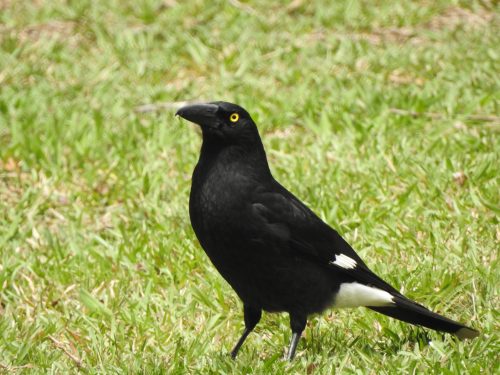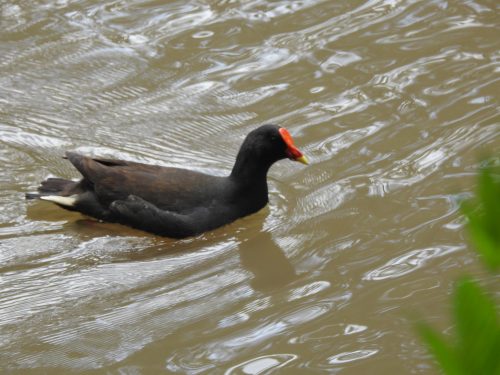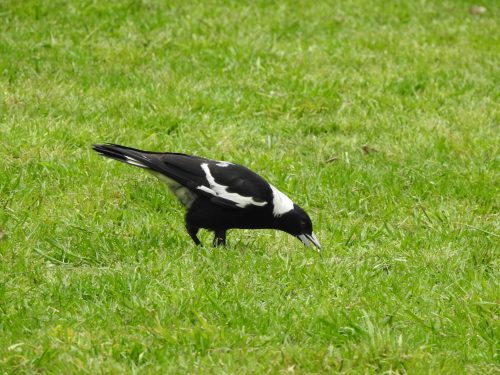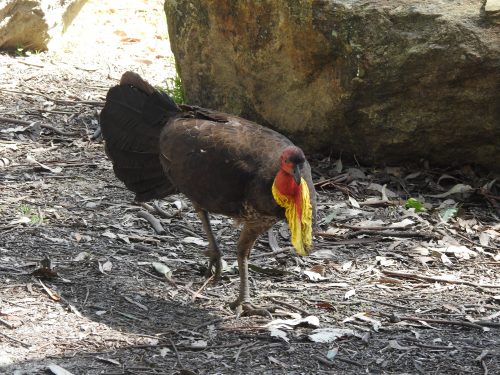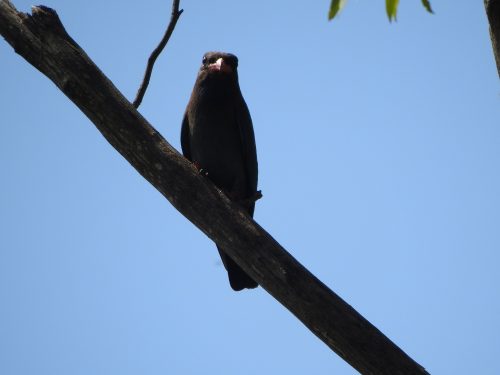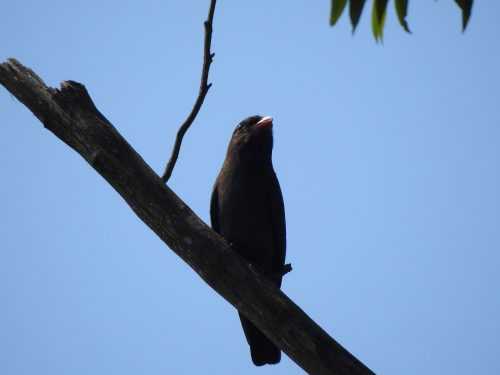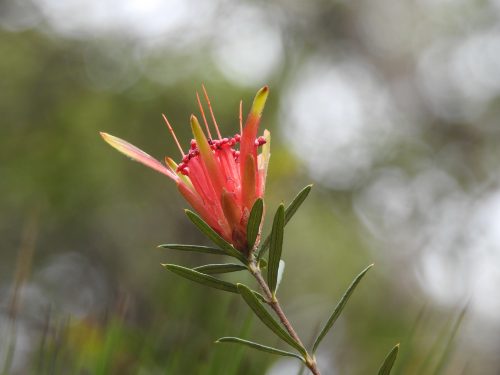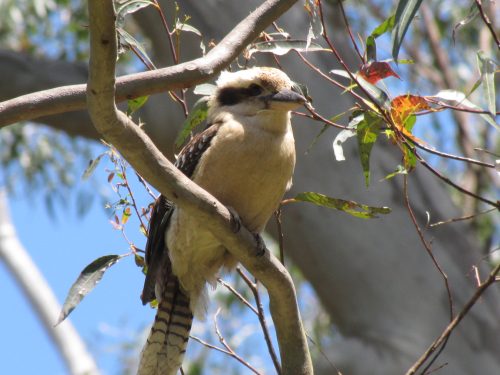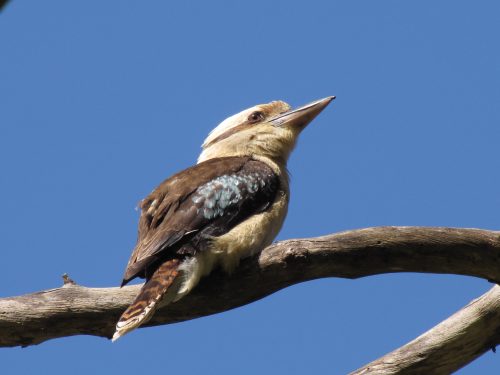A short visit to Lane Cove National Park

Laughing Kookaburras
Earlier this year I stayed with family in Artarmon for a while. This is a suburb in northern Sydney. During that time I took the opportunity to spend a few hours birding in the Lane Cove National Park, just a ten-minute drive from where I was staying. This has become one of my favourite birding spots and it is also a great place to get photos of some of the flora and fauna found right in the heart of a busy city.

One of the common birds in this national park would have to be the Laughing Kookaburra, shown in today’s photos. They are seen and heard all over the park, especially in and near to the many picnic areas. As we found out last year, the resident kookaburras are not slow at attempting to snatch food off picnic tables. one one occasion my wife had a sandwich on a plate on the side table of her folding chair and a cheeky kookaburra flew down and snatched it right off her plate. On another occasion, we were having a barbecue and a bold kookaburra swooped down and grabbed a sausage right off the hot plate where it was still cooking. It was promptly chased by several other kookaburras as it flew off into the forest in the midst of much squawking and carry-on.

At the northern part of the park, there is a short track leading to Tunks Hill Picnic Area. From here one can get good views over the national park in the direction of the Chatswood CBD. The picnic area has a shelter shed for picnics in wet weather, as well as well-kept toilets, barbecues and picnic tables.
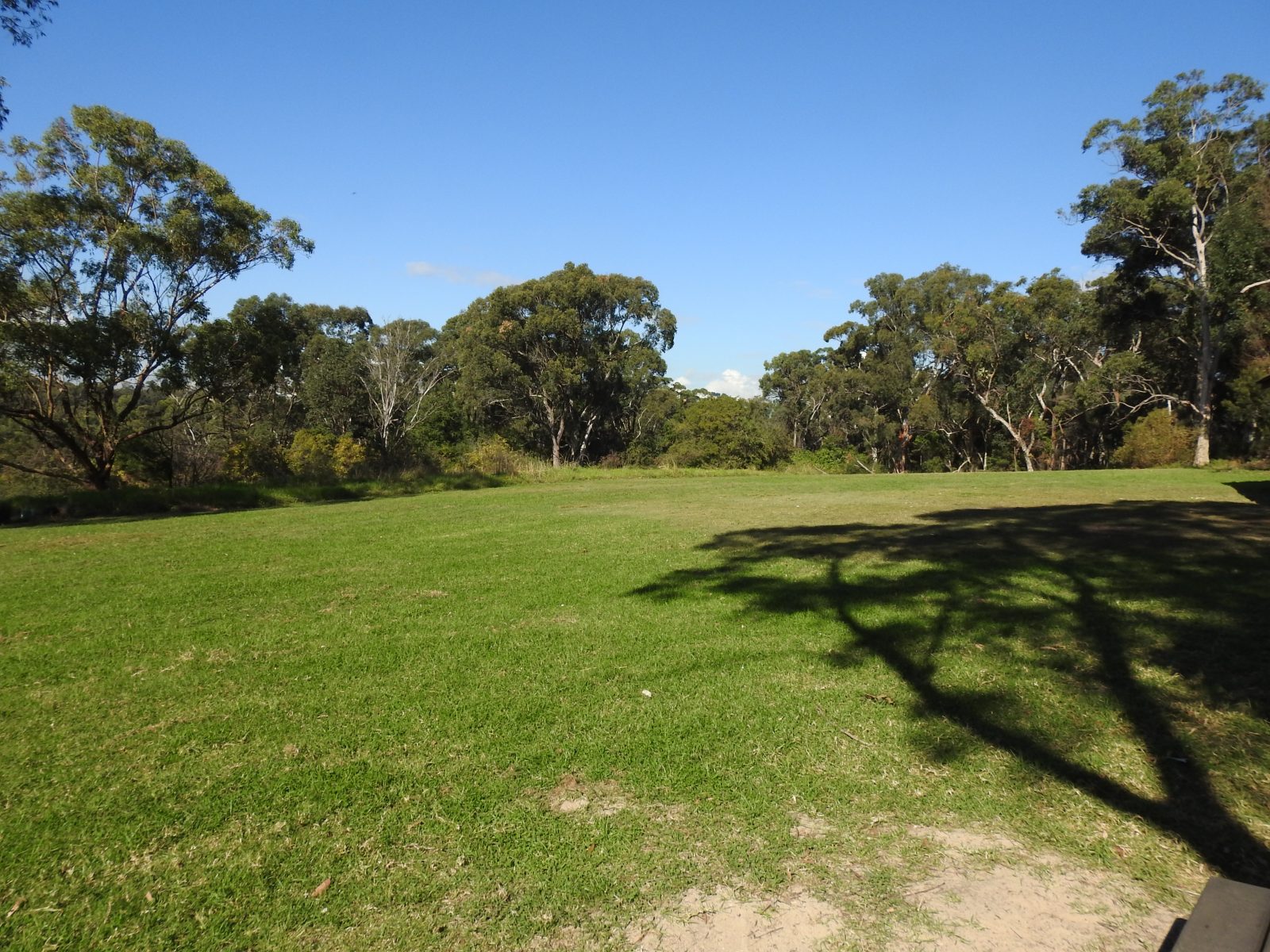
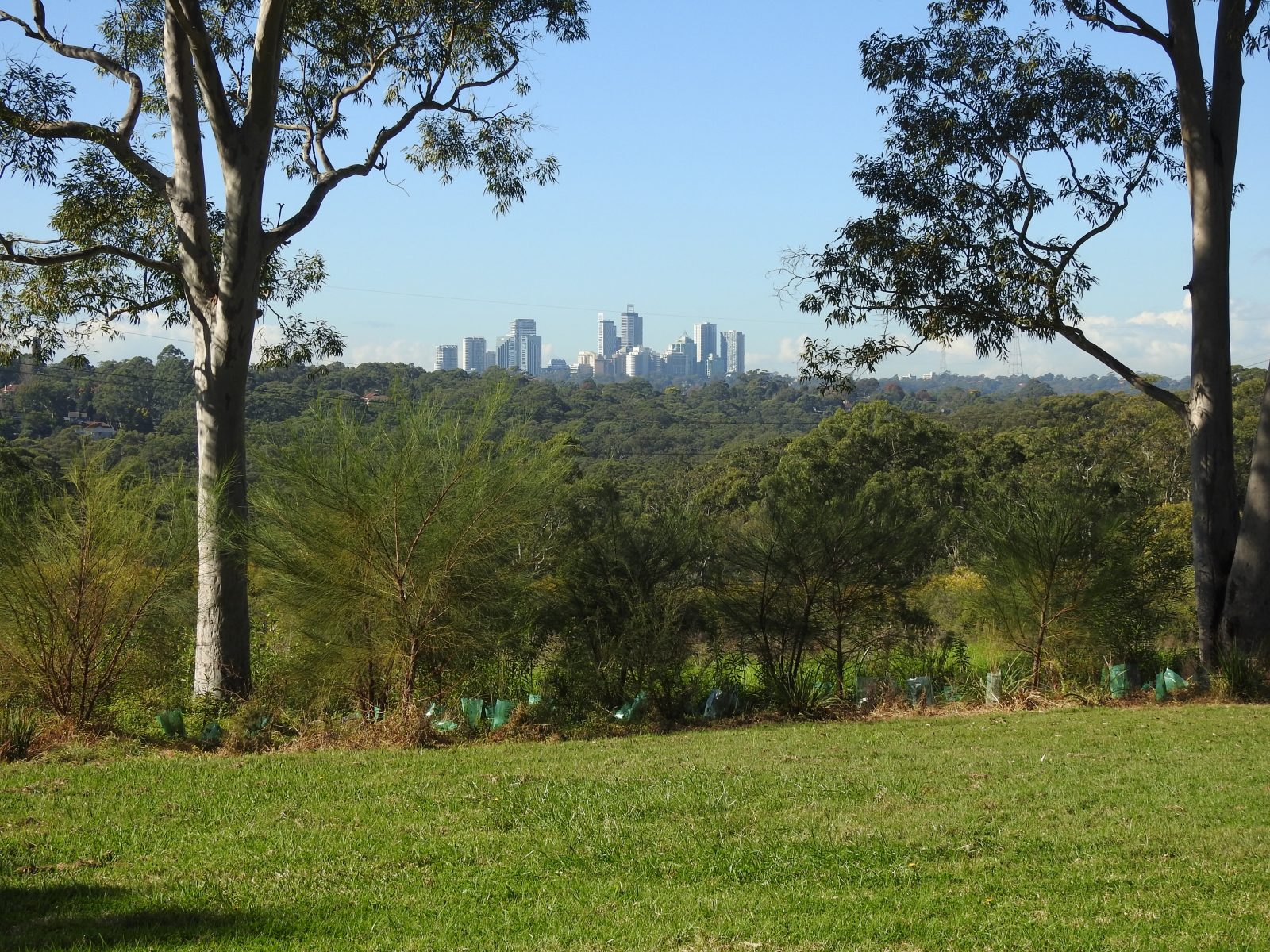
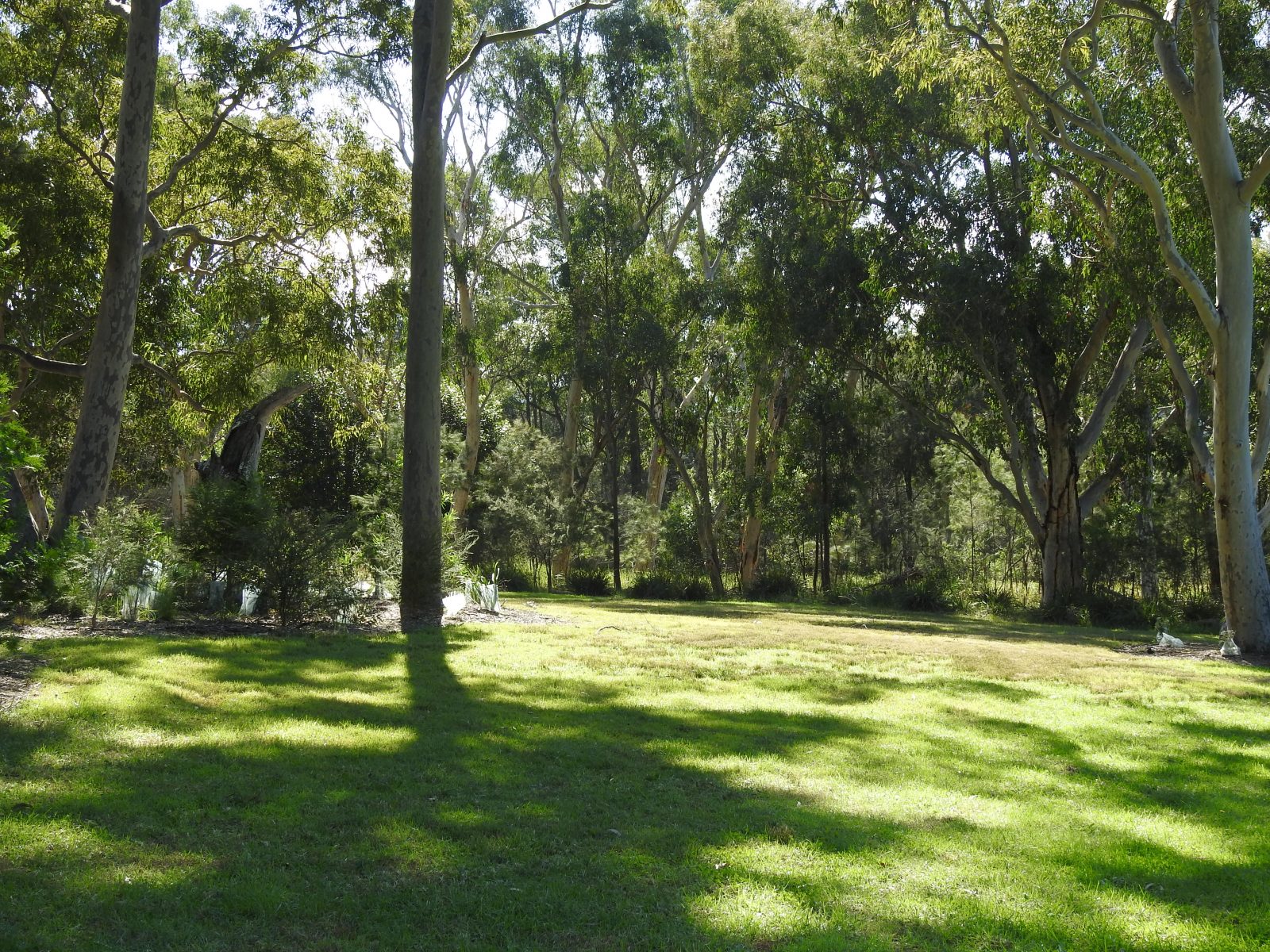

Some Birds of the Lane Cove National Park
Over recent days I have posted some photos and articles about some of the birds I saw and photographed last month on a visit to the Lane Cove National Park in Sydney. I have visited this park on many occasions over recent years because it is only about a ten-minute drive from my son’s home.
Today I wish to post a compilation of some of my other photos taken on that visit in October. The first photo (above) is of a handsome looking Pied Currawong. This is a common and sometimes noisy bird in the park. Because of its loud, forest-penetrating call and its large size, it is quite conspicuous. At home in Murray Bridge, SA, I have the Grey Currawong as a regular visitor to my garden. Although it is also a prominent bird, it lacks the stark colours of the Pied variety.
The quiet and unassuming Black-faced Cuckoo-shrike is another bird I have often seen in the national park. It quietly goes about its life without too much noise and fuss. Its quiet and lovely churring call is diagnostic. Although it is mostly coloured plain grey, in certain light conditions it can appear almost bluish. As a child growing up in rural South Australia I seem to remember that this species was called a ‘blue jay’ while the White-winged Chough was a ‘black jay.’ That makes a lot of sense. The Black-faced Cuckoo-shrike is another regular visitor to my home garden.
On my visit to the Lane Cove National Park last month I was surprised by the lack of water birds along the river. I saw a solitary Little Egret, several Pacific Black Ducks and about three Dusky Moorhens, one being shown in the photo above. I also saw several groups of Australian Wood Ducks along with a few ducklings but nothing else. No cormorants, coots, Purple Swamphens or other species of duck.
Throughout the Lane Cove National Park, one can also observe the black-backed sub-species of the Australian Magpie. This is the common magpie around the Sydney area. At home in Murray Bridge SA, I have the White-backed Magpie as a resident breeding species in my garden. While there are magpies throughout the Sydney region, they are nowhere near as common as I am used to in the rural areas of South Australia. That is a pity because so many people are missing out on hearing the beautiful song of the magpie.
My last photo today is of one of the most loved Australian Birds, the Laughing Kookaburra. Instantly recognised by most people, enjoyed by many upon hearing its hearty laughter, it is one of our iconic, much-loved national symbols.
What most people do not realise is that this seemingly delightful bird species has a darker side to it. On more than one occasion I have seen kookaburras take sausages off of a hot barbecue plate, snatch food from the picnic table at my side, defecate on a picnic table from a branch above, and generally harass picnickers for free handouts of human food.
Please don’t feed them deliberately as human food is actually detrimental to their health. Please do not feed any of our native birds and animals; it is not good for them.
I’ll get off my soapbox now.
Good birding.
Trevor
P.S.: I would love to hear from my readers about their close encounters with our bird species. Use the comments section below.
Brush Turkeys in Lane Cove National Park
It is my impression that the people of Sydney, and Lane Cove in particular, as heartily sick of the Australian Brush Turkeys which invade their gardens. Granted – I will accept that this species of bird can create a mess with their scratchings in garden beds though I have not experienced that myself. I do not live in Sydney but I do visit my son and his family in Artarmon once or twice a year. While this bird occasionally comes into my son’s backyard, it never causes any harm. That is probably because there is nothing much for them to destroy; it’s mostly trees or bushes and the few garden beds in the front yard are very bushy too.
Usually, while I am visiting I like to spend some time in the Lane Cove National Park where the species is usually seen, sometimes in numbers. On my most recent visit last month I spent about four hours birding in the park. In total, I think I saw 5 different turkeys during my stay. I always like seeing them and taking photos of them. While they may be commonplace, ordinary and a nuisance to local people, I find them fascinating. This is because we do not have this species where I live in Murray Bridge, South Australia (an hour east of Adelaide). There are several introduced populations on Kangaroo Island just off the south coast of South Australia.
To be quite honest, however, there have been a few occasions where I have felt annoyance with this species. You can read about that incident here. Or in the further reading articles listed below.
Good birding,
Trevor
Further reading:
Dollarbirds in Lane Cove National Park
Last month I had the delight of spending a few weeks in Sydney with my son and his family. During this time I had the delight of attending my grandson’s 10th birthday party. These are special times indeed. Once the children had returned to school, I was free during the day to do some exploring on my own. On one of those days, I spent about four hours in the nearby Lane Cove National Park, a wonderful spot just ten minutes’ drive away. It was a mild, sunny day with a delightful breeze.
During my stay, I explored a few of the many picnic grounds and walking trails along the main road through the park, Riverside Drive. I made a pleasing list of the birds seen and heard, taking photos of those which came within camera range. I also found a lovely spot to have a picnic lunch and a cup of tea, overlooking one section of the Lane Cove River which runs through the park.
After lunch I still had about an hour to spare, so I drove over to the other side of the river and slowly drove along the Max Allen Drive, parking at the end of this road. I still had some hot water in my thermos so I made another cuppa. While I was enjoying my afternoon tea, I heard the calls of a bird I did not immediately recognise. One of the two birds landed where I could see it. I immediately recognised it as a Dollarbird. This was only my second ever sighting of this species – the other sighting being last year at the same time of year and in the same national park.
The two birds flew around a little while calling to each other. One landed within range of my camera so I took the photos shown above and below. Despite waiting for quite a long time, neither of the birds landed in a sunny position but stayed with the sun behind. I could have walked to the other side of the tree, but that would involve walking on the river. This means that my readers cannot see the lovely colours on the feathers. You can see a much better photo and more information about this species on the Birdlife Australia site here.
The Dollarbird is so-called because of the round, white spots underneath each wing when flying. Early observers thought that these looked like silver dollar coins. They are very prominent underneath a flying bird. They are widespread in eastern and northern parts of Australia but are absent in my home state of South Australia. (There are occasional sightings but these are vagrant individuals and are not resident in my state.) This species is a member of the Roller family of birds, with 11 other species in the family worldwide. The family name “roller” comes from their courtship display while airborne.
Next time I am in Sydney, I hope that I can get better photos of this species. I have also included below some of the wildflowers in bloom in the national park during my visit.
Good birding,
Trevor
Further reading:
Wildlife of Lane Cove National Park
Over recent years, my wife and I have visited the Lane Cove National Park just west of Chatswood in the heart of Sydney. We try to get there whenever we visit family living in Artarmon nearby. Despite being in the heart of a bustling part of the city, this park not only preserves some remnant bushland for all to enjoy, it also boasts a good range of wildlife. I am particularly interested in the birdlife – hence this website. I also take an interest in other forms of wildlife, as well as the plant life, an interest which flows over from my wife.
On a visit there last October, I managed a few photos of some of the resident birds, as well as some other wildlife. A few weeks ago I shared a photo of two Long-necked Turtles here. I have also written about the local Sulphur-crested Cockatoos and the Australian Wood Ducks I saw in the park.
One of the very common birds in this area is the Noisy Miner, shown in the photo above. This individual landed on the picnic table alongside where we were sitting. I guess it was looking for a handout of human food, just like the local Laughing Kookaburras and Brush Turkeys. Noisy Miners are certainly the most common of the Australian honeyeaters in this part of Sydney.
I have noticed on all of our visits to this park that the Eastern Water Dragon is a very commonly observed reptile in the park. I think that we have seen many of these lizards on every visit to the park. The one shown in the photo below was quite friendly and unafraid, coming up quite close to where we were sitting.
Further reading:
